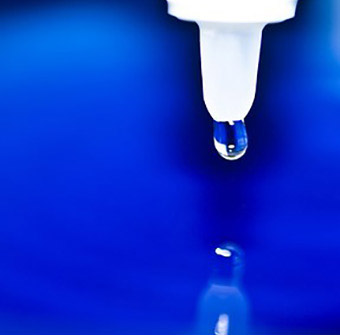Ligneous conjunctivitis is a rare form of chronic conjunctivitis. Better known as pink eye, it is an inflammation that causes the eye to appear pink or reddish. Because only 1.6 per 1 million people across the world are affected by this disease, research into potential cures is of little commercial value. To address this research shortfall, an EU-funded partnership between a Tuscan company and life sciences incubator set out to produce an effective and viable treatment for the condition.
- 22 June 2018
Having found the protein, the lack of which causes Ligneous Conjunctivitis, has sparked a virtuous circle. Actually knowing the protein not only means effective treatments, but also better diagnosis, as it is based on a better knowledge of the disease.
The ligneous variety of conjunctivitis is an affliction that manifests in the underside of the eyelid and is caused by a lack of plasminogen, a plasma protein. It mainly affects the palpebral conjunctiva, which lines the inside of the eyelids and covers the sclera (white of the eye). It causes inflamed lesions that can damage the eye tissue. The more severe the lesion, the higher the chance the disease could lead to blindness.
From surgery to eye drops
Until recently, ligneous conjunctivitis could only be treated surgically, but without durable success, with lesions still forming even after the treatment. In stepped Kedrion, an international biopharmaceutical company based in Tuscany and specialising in the development, production and distribution of plasma protein-based therapies.
Orphan drugs are medicines that are commercially unavailable because of high research costs and a low potential for profit. In its effort to combat orphan diseases, and with the support of Toscana Life Sciences Foundation, Kedrion set up a laboratory dedicated to researching plasma-derived orphan drugs, including a treatment for ligneous conjunctivitis.
The company’s research led to the development of the drug Plasminogen in the form of eye drops, which proved to be a very effective remedy and non-invasive treatment that prevents new lesions from forming. The eye drops help prevent the need for surgery and hospitalisation, both of which have a substantial impact on patients’ lives – especially considering that most of the patients are young children.
Recognising an orphan drug
The next step in developing Plasminogen was to have it officially recognised as an orphan drug in Europe and abroad. This led to the acknowledgment of Plasminogen eye drops as the first-ever drug developed to treat the rare condition and allowed Kedrion to continue its clinical trials.
With the development of the medicine proceeding, the company started looking for a new facility suitable for production. The Toscana Life Sciences incubator in Siena was a perfect fit for the project, as it provided the ideal location for small experimental trials, research and development of other drugs like Plasminogen.
The results achieved by the first clinical trial have incentivised Kedron to submit a biologics licence application for the introduction of Plasminogen in the US and a marketing authorisation application for Europe.
Total investment and EU funding
Total investment for the project “Development of New Plasma-Derived Orphan Drugs. Joint project between the Company Kedrion S.p.A. and the Institute of Clinical Physiology of the CNR in Pisa” is EUR 3 699 622, with the EU’s European Regional Development Fund contributing EUR 674 862 through the “Tuscany” Operational Programme for the 2007-2013 programming period.

